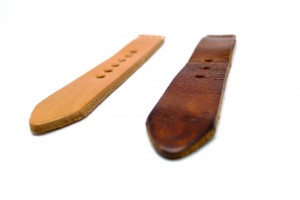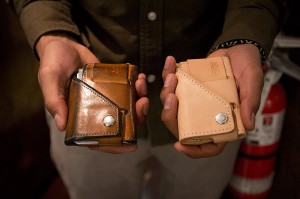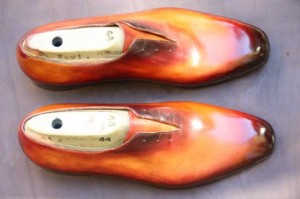Growing Leather Patina
Posted by Daniel Sutton on Jan 5th 2022
If you’ve owned leather for a while, you may have noticed it’s taken on a bit of a different color from when you first got it. Some of you might think it’s pleasant. Others might think it makes it look too antiquated. Beauty’s all in the beholder’s eye, they say. But we’re not here to critique art. We’re going to show you how to make it – or not make it. Today, we’re going to talk all about the leather patina!
Growing the leather patina can be an intense and highly involved art. It takes time to turn that rustic tobacco into a sensual honey glaze. People have spent decades on a single bag trying to tune their leather to just the right tinge. And the results are marvelous, as you can see.

Age Difference in Leather Patina Growth

Contrasting New Leather with Patinated

Honey Leather Patina on Shoes
Whether your leather will grow a patina generally depends on its type, the care that you give it, and the type of environment it’s frequently in. You’ll probably notice a sheen coalescing on the surface, or perhaps more exotic darkening, marks or patterns. What’s happening is that your leather is oxidizing and aging. As leather absorbs materials around it: dirt, water, body oils, conditioner, and even sunlight, for example, the leather will begin to grow a protective film to prevent wearing out. This process is an inevitable change for some leathers as they age, and for others, it can be near impossible to grow. Finished, pigmented leather, for example, possesses far too much protection to allow the necessary ingredients from absorbing through the hide, so is unlikely to patinate. Depending on whether you do or don’t want a patina, this may be a good place to start for prospective leather selection.
Rule of Thumb
Natural leather likes patinas. The more protective pigments your bag has, the less likely it is to grow a leather patina. If your leather is vegetable tanned, it will be more likely to grow leather patina than chrome tanned (although these types still grow leather patina very easily). Full grain leather may grow a leather patina more easily than thinner cuts as well. So if you’re looking for something that’s going to put on a dazzling sunset canvas with age, you’d better look for something closer to unfinished leather. Saddleback’s Tobacco bags, for example, are renowned amongst their brand for ease of growing patinas.
How you handle the leather also affects patina growth. As your leather gets rubbed, worn and scratched, surface protection wears away and more substances absorb in. Oils and natural elements will also contribute, as will sunlight, heat and humidity. The latter two are risky, however, as sunlight's harmful UV rays and humid, warm climates' propensity for mold may be more of a risk than they are worth. You will need to get to know your individual leather to decide which treatment is best for you. Keep conditioning, no matter what.
On the other hand, if you like the look your leather came with, you want to keep it as clean as possible. Regular deep cleaning and conditioning routines (you can read how regular here) will help stave off that leather patina a bit longer, and you will want to practice safe storage methods (“How Should I Store Leather?”) and gentle handling.
See You a Few Years from Now
Long story short, patina’s an art. It’s going to take a while to get there, and depending on whether or not that’s chill with you, it may show up in varying degrees. Lighter colored leathers tend to display the most vibrant, colorful patinas, while patinas on darker leather may be more subtle. It’s a long term process, so keep at it, and your work will show. Big time.
And hey, if you’re pleased with the beautiful leather patina your purse or briefcase put on, send it to us! We’d love to feature it here. We’ve got an eye for the exotic.
Happy Patina everybody!
Contributors:
Chris Repp (www.leatherhelp.com)
Saddleback Leather
blog.dalucastraps.com (picture credit)
tannergoods.com (picture credit)
www.dandyshoecare.it (picture credit)
www.ilvoelv.com
Daniel Sutton
Got more leather questions? Suggest a blog topic to us here!

